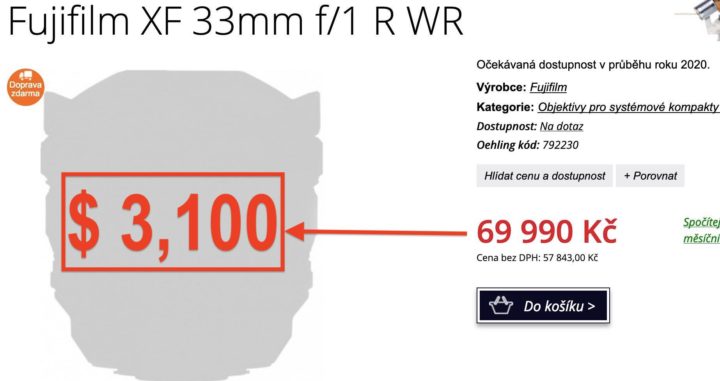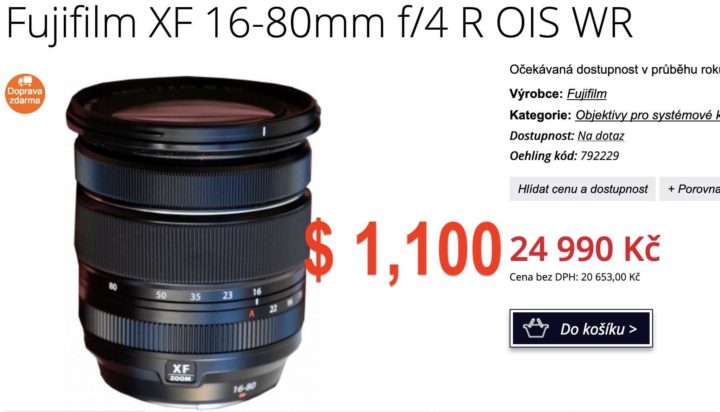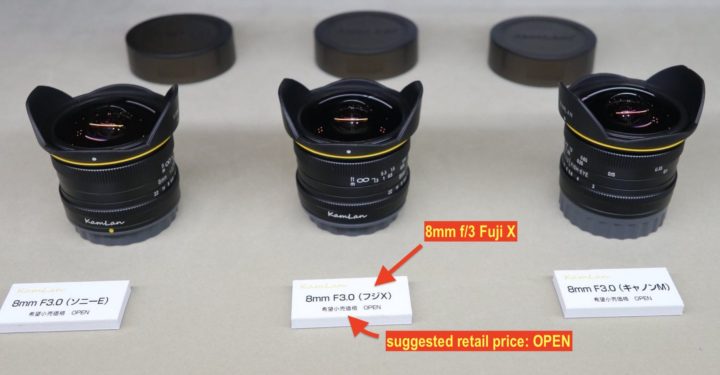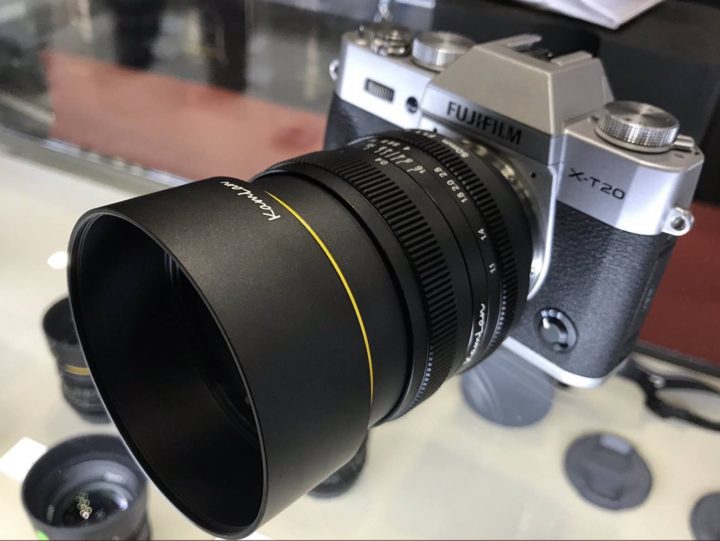
FujiLove Podcast
The second episode of the Fujilove podcast with Fuji Guy Billy just went online (episode 1 here).
It’s a one hour talk, and assuming not many of you have this time right now (you are once again reading FujiRumors at work, right? ;) ), I have summed it up all in practical and compact key points for you. Once you have more time, listen to it all here.
Adobe, Worms, X-Trans and Alternatives
- Adobe’s new enhance detail feature addresses the worm effect, which appears especially in shadow areas zoomed in at 400%
- worm effect is an Adobe X-Trans interpretation problem
- other options are: free Fujifilm X RAW Studio, in camera RAW converter, free Capture One Express for Fujifilm
- Fujifilm tries to work close with Adobe to try to provide best possible understanding of the X-Trans files
Necessary to upgrade from X-T20 to X-T30 for landscape photography?
- X-T30 has latest technology
- X-Processor 4 and X-Trans 4 BSI sensor much faster readout. That’s great for video (less rolling shutter for example)
- on the photo site, X-T20 and X-T30 are comparable
- if you are happy with X-T20 image quality, Billy does not recommend to upgrade for landscape photography
- most improvements are for sports autofocus tracking and video
- X-T20 is at its maximum potential, so you probably won’t see much updates to it anymore for better AF system etc.
by FujiRumors: let’s hope this does not mean the Fujifilm X-H1 is also at its maximum potential, since it uses the same sensor/processor of the X-T20
Should people get the wide aperture lenses f/1.2-f/1.4 or the f/2 series of lenses?
- depends on needs
- for low light, professional portraits and for shallower DOF, get the fast aperture lenses
- f/2 are great for travels, compact and lightweight
- Newer cameras like X-T3 improve autofocus also on the f/1.2 and f/1.4 lenses
Lenses for Video: Stepping vs Linear Autofocus Motor
- Fujifilm made big steps in video department
- when using AF in video, the f/2 lenses are better since they use quiet and fast AF stepping motors. AF moves smoothly
- downside: stepping motors do not have the strength to move heavier glass fast enough. For faster glass you need the linear motor with higher torque capabilities
- higher torque is great for stills, but you don’t want such fast AF movements during filming, where you want smooth and gradual focusing
- Fujinon MKX lenses: manual focus only lenses, hence no focus breathing. They are sharper than XF16-55mmF2.8 and XF50-140mmF2.8
- for family, friends, vlogging, Billy choses the f/2 lenses
Autofocus Motors Compared: Stepping vs. Linear vs. DC coreless vs ultrasonic
- Billy says the 56mmf/1.2 is equivalent to 85mmf/1.2 in terms of 35mm field of view. It is very fast and hence has big glass elements the AF needs to move
- autofocus motor options are:
– stepping motors
– linear motors
– DC coreless motors
– ultrasonic type of motors
- Each of these 4 motors has Pros and Cons
- XF56/1.2 has a DC coreless AF motor, because stepping motor is not strong enough to move big glass quickly, unless a much bigger stepping motor is designed, which would make lens very big
- DC coreless motor allowed the XF56/1.2 to be smaller and still have enough power to move the glass elements
- problem with DC coreless motors is that they do not move as smoothly and consistent as stepping motors
- XF35/2 uses a stepping motor, because lens elements are small and light. Silent and smooth
- linear motors are bigger than stepping motors, but silent and smooth like stepping motors, so great for video. Some Fujinon lenses have even 4 linear motors inside
- AF motor choice depends on the prupose on the lens: is it mento for video or stills? Is it a fast aperture lens? Should it be compact?
Camera Corner – Fujifilm X-T30 and X-T3
- Fujifilm X-T30 has lots of features of X-T3
- X-T3 was best hybrid camera of 2018 according to many sites
- X-T30 offers great value feature-wise and takes over lots of features of X-T3
- 30 fps with no EVF blackout, great video functions like internal F-log
- X-T30 is a fully featured camera
- Fujifilm cameras look beautiful, and also design and controls is reason to buy a camera
- in the Fujifilm system, you don’t sacrifice image quality if you buy a $1,200 or $1,800 camera. Strategy is to use same sensor/processor for same image quality
Lens Corner – XF16mm f/2.8
- XF16mm f/2.8 falls into the f/2 compact lens lineup. Small, fast AF, weather sealed, excellent IQ with nice detail and a great minimum focus distance
- 16/28 Is scary good in terms of quality for its price
- XF16mm f/1.4 is different type of beast. More control over DOF and more flexible in low light, but Billy thinks Fujifilm will sell much more XF16/2.8 lenses than 16/1.4, because it’s great value
- for small camera bodies like X-T30, the f/2 and f/2.8 lenses are great combo
- 16/2.8 is also a good lens for vlogging, still some nice shallow DOF
Tip Corner – Movie silent control
- movie silent control is found in X-H1, X-T3 and X-T30
- movie silent control gives you independent control from your dials. Just tap on the back of the screen and from there use touch controls to change ISO, f/stop, Shutter Speed
- even better than touch: use the joystick to change movie silent control settings
- movie silent control allows for independent video/stills controls
- on X-T30, you can set one of the function buttons to turn ON/OFF movie silent control
Will X-T and X-H get flip out screen in future? X-T30 for Vlogging?
- Billy hoped for an X-T30 with flip-out screen and hopes for it to come to X-T/X-H line in future
- X-T100 with selfie screen has different design, and it’s actually wider camera than X-T20/30, because there needed to be room for the selfie screen hinge
- with HDMI output you can use external monitor to see yourself
- It comes down to costs and design. Changing the design raises costs
- Top concerns of vloggers:
1 – Am I in the frame? With wide 16mm lens or XF18-55 you don’t have to worry about not being in the frame
2 – Is the camera still recording? X-T30 has tally light
3 – Am I in focus? Eye AF on X-T30 is huge improvement.
- X-T30 is very good vlogging camera. It has also a low rolling shutter
- Selfie screen can be distracting. Billy used X-T100 for vlogging, and he tends to look at the flip-out screen instead of looking at the lens
Accessories and Software
App Improvement
- Updated App coming around X-T30 launch date [March 20]
That’s all folks, and don’t forget to follow FujiRumors on Facebook, Instagram, RSS-feed and Twitter :)
X-T Rumors, News and Community






